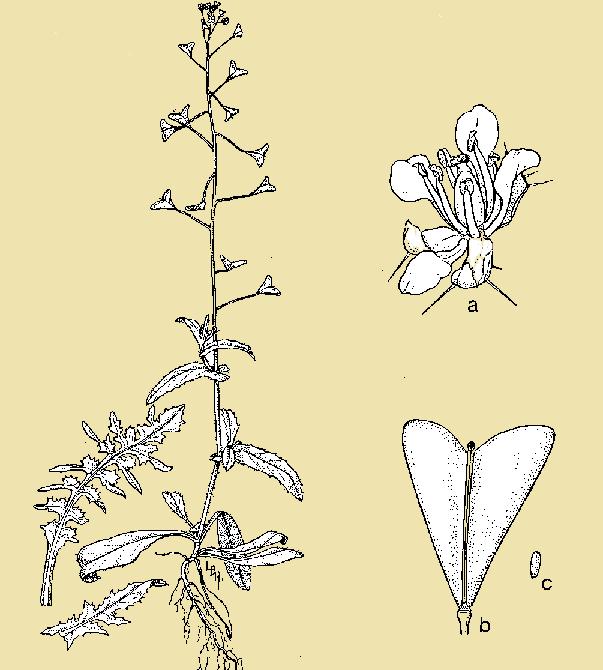 |
|
|
|

|
|||
| |
|||
We continually select for those weed species that thrive under our production practices and escape current control techniques. Shepardspurse is one of several weed species that have been around for a long time but that growers and pest control advisors have seen become increasingly widespread in recent years. The botanical name for shepardspurse is Capsella bursa and it is in the mustard or crucifer family. This is a large family of plants and includes many common weeds such as London rocket, sahara mustard, and black mustard but it also includes many of the crops grown here such as broccoli, cauliflower, cabbage, bok choy, kale, arugula, kohlrabi, mustard greens, daikon, and others. Almost all of the plants in this family are valued for their nutritional or medicinal properties. Even many of the weeds are used for medical purposes. Shepardspurse was frequently used during the first world war to control bleeding. It can be difficult to control shepardspurse selectively in many brassica crops because of its similarity. It is the physical characteristics of this weed, however, that have been largely responsible for its spread. The foliage of shepardspurse is characteristically a low growing rosette that is often covered and can be difficult to reach with herbicides. The seedhead, on the other hand, grows 12 to 20” above the vegetative parts and has been reported to produce as many as 50 thousand seeds per plant in a single season. The seeds are very small and can float in water and blow in wind. They germinate at very shallow depths and soil active herbicides can fail if they are not concentrated at the soil surface. Shepardspurse proliferated in alfalfa during the years when 2, 4-DB (Butoxone, Butyrac) was the primary broadleaf herbicide used because 2, 4-DB is ineffective on this weed. In vegetable crops, shepardspurse can be controlled with Kerb on the crops it is registered on if it is concentrated at the surface. It is less effective if some of the herbicide leaches below the germinating seeds. Prefar, Dacthal, Balan and Prowl are mostly ineffective on this weed.
To contact Barry Tickes go to: btickes@ag.arizona.edu. |
|||
| Back | |||
For questions or comments on any of the topics please contact Marco Pena at the Yuma Agricultural Center. |
|||
| Home | Cotton
| Veggies | Forages
| Grains | Citrus
| Crop x Crop Insects | Diseases| Weeds | Pesticides | Economics | News | Weather | Research | Photos | Contacts | General Info. Copyright © 2001 University of Arizona, College of Agriculture and Life Sciences Webmaster: Al Fournier (acis@ag.arizona.edu) |
|||
